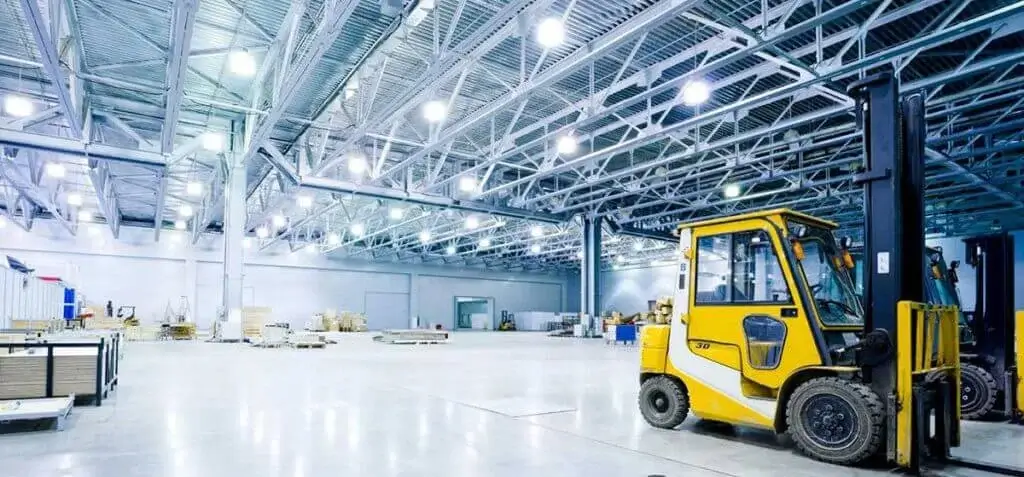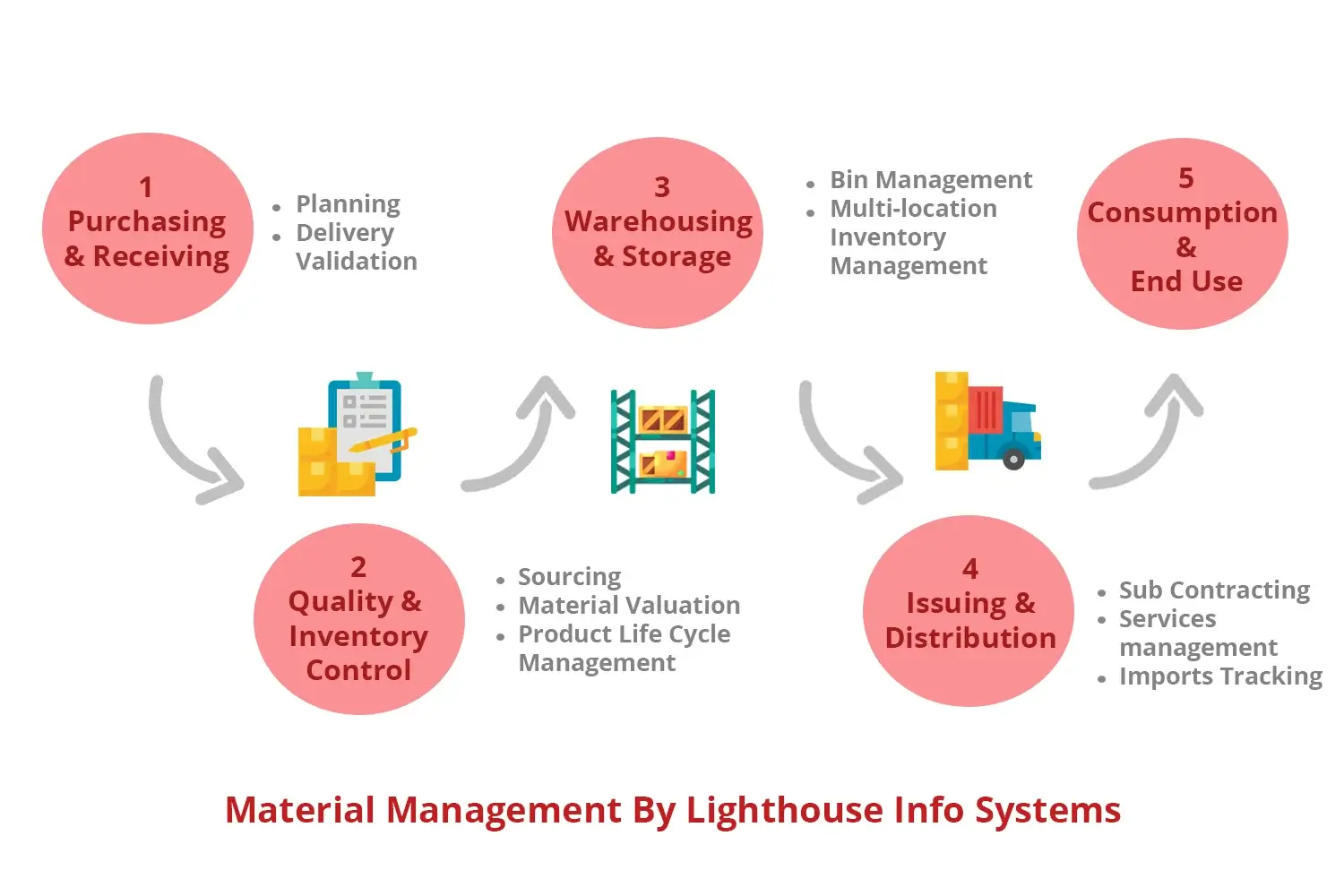
Enterprise Resource Planning is a powerful tool to control and monitor all the activities in the industry. ERP software relies heavily on its module. Material management is one of the core modules in ERP software. The material management module manages the inventory, quantity of goods, raw material, manufactured goods, and need of material. The material management module eases the entire Supply Chain Management process. Availing the right quantity of raw material to Supply Chain can lead to successful operations and manufacturing processes.
ERP for material management fetches data from other modules via an interconnected network of modules and uses it to generate reports on the need for raw material, and storage of manufactured products. Integrate with sub-modules and other modules makes it all possible. Material management aids the industry to complete production in the given deadline, and dispatch the manufactured products to its shipping address. The material management module uses a unique schema number for handling the needs of multiple manufacturing projects, to supply the right raw material.
ERP for material management makes all the tasks of industries easy. Lighthouse ERP for material management has been implemented is various industries like manufacturing industry, steel industry, coal industry, and cement industry. Lighthouse ERP module for material management focuses on the real-time requirements of material need in the industry. Material management module, also called as inventory management module keeps all the reports of inventory in real-time so that access material should not be ordered and finances stays put. This module makes huge impact on working operations in the industry.

Material management deals with the purchase of raw material and the storage of manufactured products. While purchasing raw material, the value of material needs to be recorded so that it can be forward to the finance and accounts module.
The module also tracks the movement of manufactured material. When the material is dispatched, the information of its movement is recorded and forwarded to the logistics module in ERP software. The material management module makes this task simple.
The ERP Software for Material Management caters to all the needs that are relevant to the handling of material. This module also shares information with the quality control module of material management ERP software to assure the quality of the batch is matched with the standards set by the industry.
Bin management is an important activity in the material management module as it directly co-relates to inventory management. Bin storage is allocated in the warehouse, which in turn receives the manufactured product.
Bin management also ensures that the quantity is stocked and not short. These inventories are grouped and stacked in the warehouse during the order fulfillment process. The material is scanned and tagged for future reference.
Bin management also ensures that a particular brand is available or not. If the brand is not available in the bin or inventory, then it has to be refilled by generating an order. This signifies the involvement of the material management module in ERP software.
Supply Chain Management heavily relies on distribution channels and centers. Often, these distribution channels are located across various states or locations, which are difficult to manage.
Multi-location inventory in the material management module is a feature that eases the process of handling inventory of multiple locations.
Details of multiple locations are stored centrally, which can be accessed from any geographical location. This makes managing the stock and material simple.
Every product has a certain life cycle that it goes through in production. New innovative products are important for keeping the business in operation. Analyzing the success rate of the product is crucial.
Product Life Cycle management helps in determining the success rate and effectiveness of the new product. It can also help in determining which products needs to be revamped so resources can be cut down.
The constant monitoring and analysis of products are achieved through Lighthouse ERP. The software helps the industry in which products can be profitable, and which products have more selling rates than the others.
Overall reduction in the operational cost of the industry as ERP software increases the efficiency of the operations.
Central storage of information and records helps the industry in cutting down paper trails and stacks.
Centralization of information aids the industry to access data easily and eliminates misplacement of files & documents.
Exchange of information and reports with other modules and sub-modules creates harmony among operations.
Allotment of serial/lot numbers to batches of material helps the industry to keep the track of products.
Shortage of raw material can be easily estimated, hence refilling the stock of raw material becomes a simple task.
Absolute information about the material helps the industry to run smooth Supple Chain Management.
Material Management or Inventory Management is pivotal for ERP module. This module integrates with various other modules to get information and prepare a detailed report of the replenishment of stocks and enables tracking of manufactured products. Lighthouse ERP designs and develops industry-specific ERP software, that helps the industry to increase its productivity.
By improving the entire strategic sourcing process, you can shorten cycle times, improve process control, generate sustainable savings, and create lasting business value.
Purchase plan based on Make-to-Stock (Forecast) or Make-to-Order (Sales Order)
Requirement Analyses based on MRP and Bill of Material
Supplier Analyses based on Credit Limit, Price, Quality, Delivery, Service criteria
Lead time and Best Rate: Item Purchase History Analysis
RFQs and Supplier Quotation comparative Analysis
Landed Value Calculation with provision for additional expenses
Purchase Requisition/Order Generation from Purchase Planning
Inventory Control- Comprehensive inventory controls for stock movements within and outside unit/ plant
stock valuation on FIFO/Weighted Average/Std Cost, Stock Aging and Reorder management
Multi level classification of inventory, Inventory handling based on several Attributes
Setting Inventory, Purchase and Sales Account at company/Group/Item level for extensive Inventory Analysis.
User defined procurement flow: Requisition- Enquiry- Quotation- Purchase order Processing-Material Receipt-Supplier invoice
Linking of Gate entry, Weighslips, QC Inspection, Purchase Order, Indents
Payment Advice- Management of Advance payments to suppliers
Multi Level Approvals to PO, Material Return & Rejection/Replacement Management.
LC Management for Purchase
Define Warehouse/Rack/ Bin structure
Reconciliation and Stock verification with the help of external devices
Warehouse wise and consolidated stock reports
Physical Stock Verification and Adjustment
Work orders- Fixed Value, Service quantity or rate based Contract types
Contractor Issue- Billable or Non Billable
Issue slip and Debit note for stores items issued on Chargeable basis
Service Billing effect in accounting system with references to the work orders
Import Purchase Order and Letter Of Credit (LC) workflow
Entry of Import Shipment data at Loading port
Bill of Entry, Custom Duty Calculations and postings
Material Receipt GRN linked to the Bill of Entry
Cenvat of duties against Bill of Entry
Import Bill Passing along with Overhead Expenses linking
Actual Landed Value Analysis against the Import Purchase Order